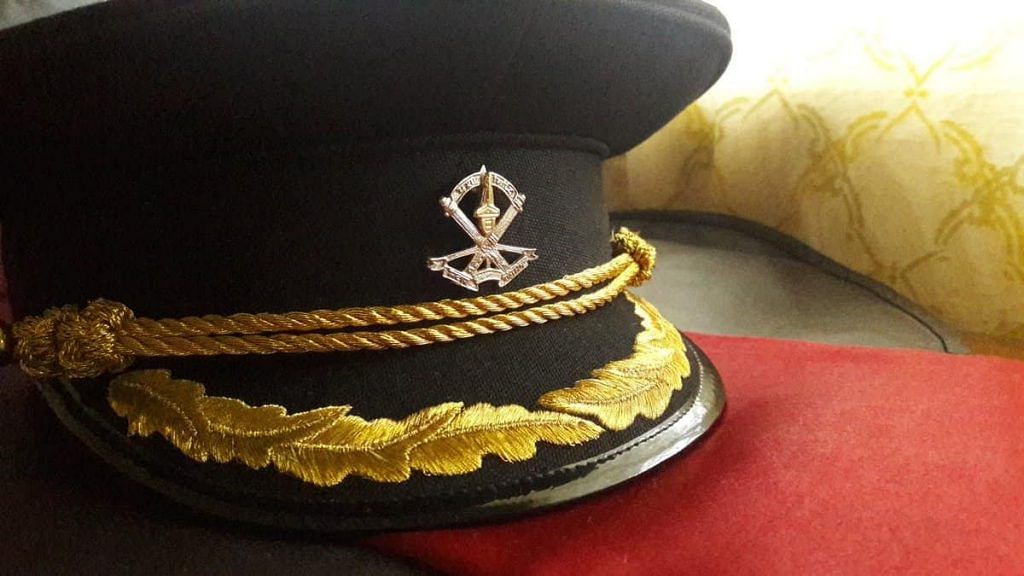New Delhi: In ThePrint’s Cut The Clutter episode 456 aired on 28 April 2020, Editor-in-Chief Shekhar Gupta had mentioned a Mahar Regiment story while paying tribute to late General K. Sundarji, the former Chief of Army Staff, on his birth anniversary.
Quoting Sundarji, he narrated an incident from the first war of Kashmir in 1947-48 when one platoon of the Army regiment “ran away” after the raiders attacked, while another valiantly faced the enemy — with the General making a point that “fear is infectious, and so is courage”.
In response to the episode, Brigadier (retd) Vivek Sohal, on behalf of veterans from the Mahar Regiment, has written to ThePrint, saying the part from “this otherwise well conceptualised, researched and delivered programme has left the Mahar Regiment Fraternity in deep anguish”.
The letter said the episode picked up “an unsuitable parallel with an unfortunate narrative that is short on facts” on the history of the Mahar Regiment.
Here are relevant excerpts from the letter:
“The programme (Cut The Clutter episode 456) deals mainly with the topic ‘Why Oxford team breaks ahead of the pack in COVID vaccine race, its science & prospects’. A logical, comprehensive and much needed exposition on the subject, and suffice it to say, your talk has been very well received for it brings hope to humanity.
“However, towards the end of the programme, while paying tribute to Late Gen K Sundarji, PVSM you had, in the manner of motivating your viewership to shed fear for courage to face COVID 19, ended up picking an unsuitable parallel with an unfortunate narrative that is short on facts on the subject history of the Mahar Regiment. This narrative has caused a great deal of mortification and consternation amongst the Mahar fraternity that needs earnest correction.”
The Narrative…
We got talking about fear and courage…Gen Sundarji said that all the talks of the fighting abilities of martial races, certain nationalities or religions over others were not true…it all depended on the environment…he gave example of his Mahar Regiment…in 1947-48, in Poonch area, one platoon of the regiment deployed on a hill feature ran away once attacked by the raiders…another platoon of the same battalion on an adjoining feature faced the enemy because their JCO stood up and charged at the raiders…he was beheaded by the raiders with a sword…a legend was built amongst the troops that the JCO kept fighting even headless and that’s what gave them courage… Gen Sundarji made a pertinent point that “fear is infectious, and so is courage”.
Also read: India, China hold talks as Beijing’s ‘lack of cooperation’ slows Ladakh disengagement
Flaws in the Narrative
In 1947-48, Mahar battalions were Machine Gun (MG) battalions. The Machine Guns, by virtue of their Long Range, Automatic and Rapid Rate of Fire, were deployed with Infantry troops to engage enemy at distances beyond the short range of weapons authorised to individual soldiers. The MGs were deployed along with regular Infantry Battalions in support role(s) for Offensive, Defensive and Withdrawal operations in war. Owing to their being an effective long range automatic weapon, the said MGs were deployed in detachments in support of Infantry. Hence they were never deployed in Platoons.
In no eventuality would a platoon of MG battalion be deployed together and compactly; leave alone two platoons being deployed on neighbouring hills.
Most of the battles in the first six months of the said war took place in Jhangar, Naushehra, Rajauri and Thana Mandi. Poonch Garrison, then occupied by state forces, were in a state of siege until regular army troops got inducted with effect from April 1948.
There is no instance recorded or recollected by the veterans where a JCO was beheaded while he was motivating his troops to repulse the attack by raiders. But there is definitely an instance of a sub-section commander, Hav Rawoo Kamble, who manned the MG after all his team members had got killed while Jhangar feature was under fierce attack from the raiders, and who continued firing till such time he was himself beheaded. His finger was found inside the trigger guard… The rigour mortis that had set in had ensured that they couldn’t remove his finger from the trigger. This was at the battle of Jhangar located amidst Naushehra and Mirpur.
It is grossly incorrect to quote or aver that any Mahar troops ever ‘ran away’ leaving their post. There had been instances, both in 1947-48 and in 1962, when the infantry troops, with whom the MGs were affiliated, withdrew either on the orders from top or of their own volition. “The MG detachments of the Mahar battalions had on all such occasions continued to, first, cover the withdrawal of infantry, and secondly, to fire at the enemy till the last man, last round or till they attained martyrdom”.
It is a well-known fact of history that the units and troops of the Mahar Regiment have never had any operational debacle nor had committed a disgraceful act of ‘running away from a post’ upon being attacked. As a matter of fact, the battalions of the Mahar Regiment have emerged to be the last ones standing in many an operation in all the wars.
Also read: Chinese deception at LAC is just like Pakistan in Kargil — former Ladakh corps commander
